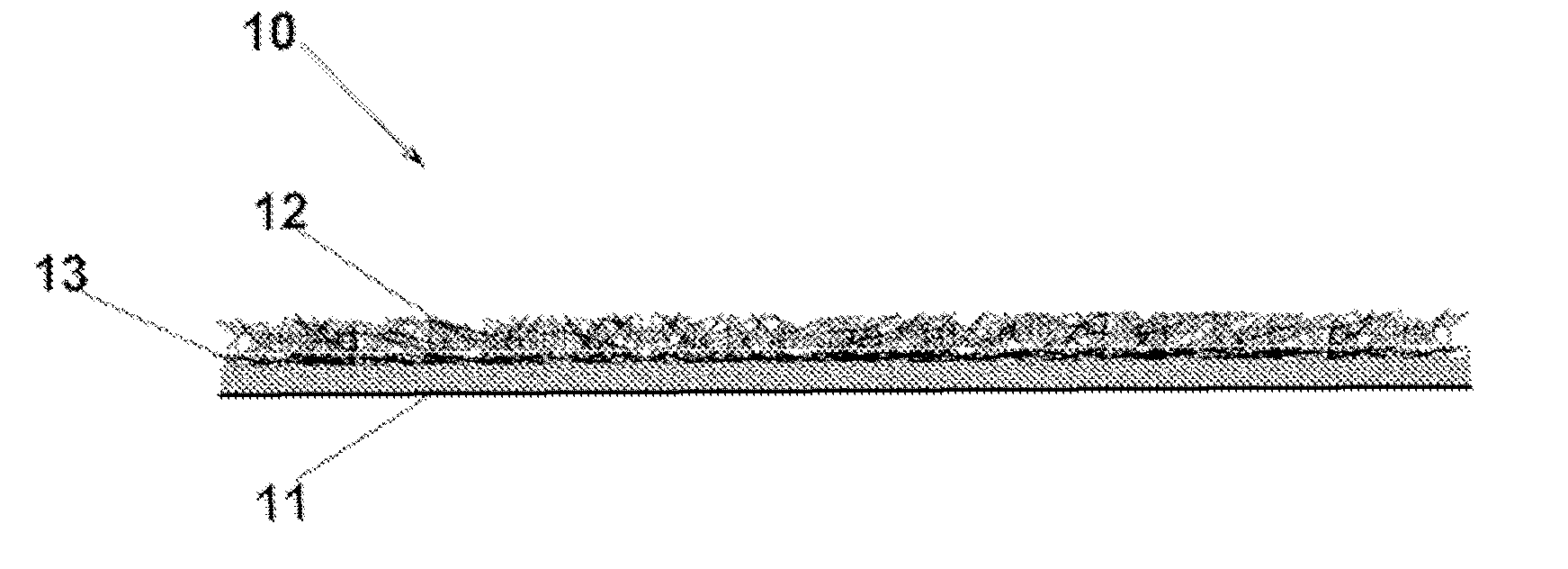Method for producing a device applicable to biological tissues, particularly a patch for treating damaged tissues, and a device obtained by said method
a technology for biological tissues and patches, applied in the direction of specific peptides, antivirals, peptides/protein ingredients, etc., can solve the problems of elastic modulus and tensile strength, and not having the mechanical and structural characteristics, etc., to facilitate the formation of nanofibre meshes and rapid preparation
- Summary
- Abstract
- Description
- Claims
- Application Information
AI Technical Summary
Benefits of technology
Problems solved by technology
Method used
Image
Examples
Embodiment Construction
[0034]Fibrin is a polymer of natural origin involved in numerous biological repair processes, and in blood coagulation in particular, and it is reabsorbed by means of a process known as fibrinolysis. Having formed from inside the support layer, the fibrin contained in the device according to the invention becomes organised in a cross-linked nanofibrillary structure that provides an extracellular matrix suitable for the growth and migration of cell components, enabling the formation of biological tissues. It consequently provides a substrate suitable for the regenerative treatment of damaged tissues and also for in vitro cell culture. It should be noted that, because the fibrin contained in the device according to the invention is already cross-linked, it does not have a haemostatic function when it is in contact with the damaged biological tissue; it serves instead as a three-dimensional extracellular matrix and vehicle for the controlled release of pharmacologically active ingredie...
PUM
| Property | Measurement | Unit |
|---|---|---|
| concentration | aaaaa | aaaaa |
| temperatures | aaaaa | aaaaa |
| temperature | aaaaa | aaaaa |
Abstract
Description
Claims
Application Information
 Login to View More
Login to View More - R&D
- Intellectual Property
- Life Sciences
- Materials
- Tech Scout
- Unparalleled Data Quality
- Higher Quality Content
- 60% Fewer Hallucinations
Browse by: Latest US Patents, China's latest patents, Technical Efficacy Thesaurus, Application Domain, Technology Topic, Popular Technical Reports.
© 2025 PatSnap. All rights reserved.Legal|Privacy policy|Modern Slavery Act Transparency Statement|Sitemap|About US| Contact US: help@patsnap.com



